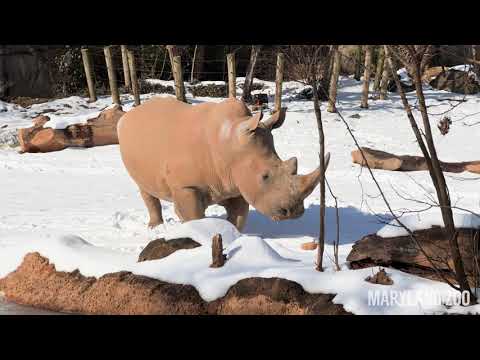- Exploring the fascinating relationship between rhinos and snowy environments.
- Understanding the physiological adaptations of rhinos to cold climates.
- Insights into the behavior of rhinos in winter conditions and their interaction with snow.
- The significance of snow exposure in zoo habitats for rhinos’ health and enrichment.
- Examining conservation strategies related to rhinos’ adaptability to changing climates.
When thinking about rhinoceroses, the first image that comes to mind often involves sprawling savannas or lush forests. However, a sight as extraordinary as rhinos in snow is both rare and captivating. Snow-covered landscapes are not the typical habitat associated with these majestic creatures, but their interactions with snowy environments provide fascinating insights into their adaptability and resilience.
Rhinos, primarily from regions where snow is atypical, have demonstrated remarkable capabilities in navigating colder climates, particularly in controlled environments like zoos. Understanding their response to such conditions provides valuable information on the biology and environmental adaptability of these magnificent creatures. Snow, though unusual for rhinos, presents an opportunity to explore the breadth of their physiological and behavioral adaptability.
Physiologically, rhinos are equipped with unique features that allow them to tolerate lower temperatures than one might expect. Their thick skin acts as a natural barrier against the cold, retaining body heat while offering protection from the elements. Subcutaneous fat also plays a vital role in insulation. While these attributes are crucial, rhinos exhibit additional ingenious adaptations. For example, the African white rhino can adjust its activity levels, doing most of its grazing during the warmer parts of the day to conserve energy and body warmth. Rhinos also modify their diet, consuming dry, fibrous vegetation in the winter that helps maintain energy levels.
Behavioral responses to snowy landscapes offer further intriguing insights. In zoo environments where snow is artificially introduced for enrichment, rhinos are observed partaking in behaviors not typically associated with them in the wild. Rolling in the snow, a behavior usually employed with mud, helps them with thermoregulation and offers protection from the cold. This behavior suggests an inherent flexibility in their behavioral repertoire, facilitating their adaptation to novel conditions. Moreover, snow allows rhinos to engage in play behavior, which can be significant for mental stimulation. Observing these behaviors provides crucial information to zoo managers aiming to enhance rhino welfare through environmental enrichment.
The presence of snow in rhino habitats can be highly beneficial, particularly in zoo settings. Exposure to different surfaces and textures can prevent foot problems, a common issue in captive rhinos due to restricted movements and unnatural flooring. Walking on snow encourages a natural gait, promoting muscle development and joint health. Furthermore, being in snow-covered environments encourages exploration, a key aspect of animal enrichment that prevents boredom and supports mental health.
Rhinos’ interactions with snow also carry implications for conservation efforts, especially as climate change introduces previously unheard-of climatic variations in their natural habitats. Understanding how rhinos can cope with colder climates may open new avenues for conservation programs aimed at bolstering their resilience to environmental changes. By closely analyzing their reactions, researchers and conservationists can better strategize on habitat management and species preservation, ensuring these resilient yet vulnerable creatures continue to thrive.
The phenomenon of rhinos in snow is not just a breathtaking visual spectacle; it is a testament to the incredible adaptability of these ancient animals. Their unexpected interactions with snow offer vital lessons in zoology, shedding light on their natural history and adaptability. It serves as a reminder that despite the challenges posed by climate change and habitat loss, with the right conservation strategies, rhinos can be resilient figures in a rapidly changing world.
*****
Source Description
Rhinos and snow, now that’s a sight to behold! 🦏❄️ J.P. and Jelani were out exploring their frosty surroundings, leaving their tracks across the icy terrain.


